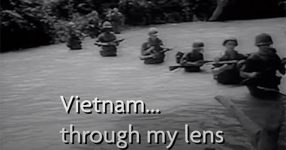In the documentary “Blood and Oil: The Middle East in World War I”, the narration begins with a vivid description of the United States’ invasion of Iraq in 2003, setting the stage for a deeper exploration of the historical roots of conflicts in the Middle East. The focus then shifts to the early 20th century, examining the complex web of wars, revolts, and foreign occupations that have plagued the region for decades.
The Ottoman Empire’s Entrance into World War I: 1914
The year is 1914, and the Ottoman Empire, under the control of Enver Pacha, Talat Pasha, and Jamal Pasha, finds itself drawn into the cataclysm of World War I. Enver Pacha’s manipulations lead to the Ottoman Empire’s participation in the war, despite being ill-prepared and recovering from the losses of the Balkan Wars. The disastrous Sarikamish campaign in Eastern Anatolia unfolds, leaving the Ottoman forces vulnerable.
The Dardanelles Campaign: Churchill’s Gamble
As the Western Front in France faces a stalemate, Winston Churchill proposes a daring plan to open a new front in the Middle East. The Dardanelles campaign aims to control the straits and pave the way for the Royal Navy to reach Istanbul. Despite initial setbacks, the British naval attack on the Dardanelles takes an unexpected turn when Turkish forts run low on shells. The narrative intensifies as the fate of the campaign hangs in the balance.
The Gallipoli Campaign: Struggles on Land and Sea
The focus then shifts to the Gallipoli Peninsula, where a combined land and sea invasion unfolds. British, Australian, New Zealand, and French troops land at Anzac Cove and Cape Helles, facing unexpected challenges. Colonel Mustafa Kemal’s strategic brilliance comes to the forefront, as Turkish forces successfully defend against Allied advances. The battle turns into a bloody stalemate, with high casualties and failure to capture critical terrain.
The Suez Canal and Ottoman Advances: The Battle in the Sinai Desert
Meanwhile, the Ottoman Empire, under Jamal Pasha, attempts to strike a blow against the British Empire by advancing on the Suez Canal. The Turkish forces face challenges crossing the treacherous Sinai desert, leading to a failed attempt to capture the vital waterway. The documentary explores the complexities of the Ottoman military strategy and the challenges faced by both sides in the Middle Eastern theater of World War I.
As the documentary concludes, viewers are left to ponder the interconnected events that shaped the Middle East during World War I. The narrative weaves together historical footage and expert commentary, offering a comprehensive understanding of the bloodshed, political maneuvering, and the enduring impact of the conflict on the region’s geopolitical landscape. “Blood and Oil: The Middle East in World War I” sheds light on a chapter of history that continues to influence the complexities of the Middle East today.












